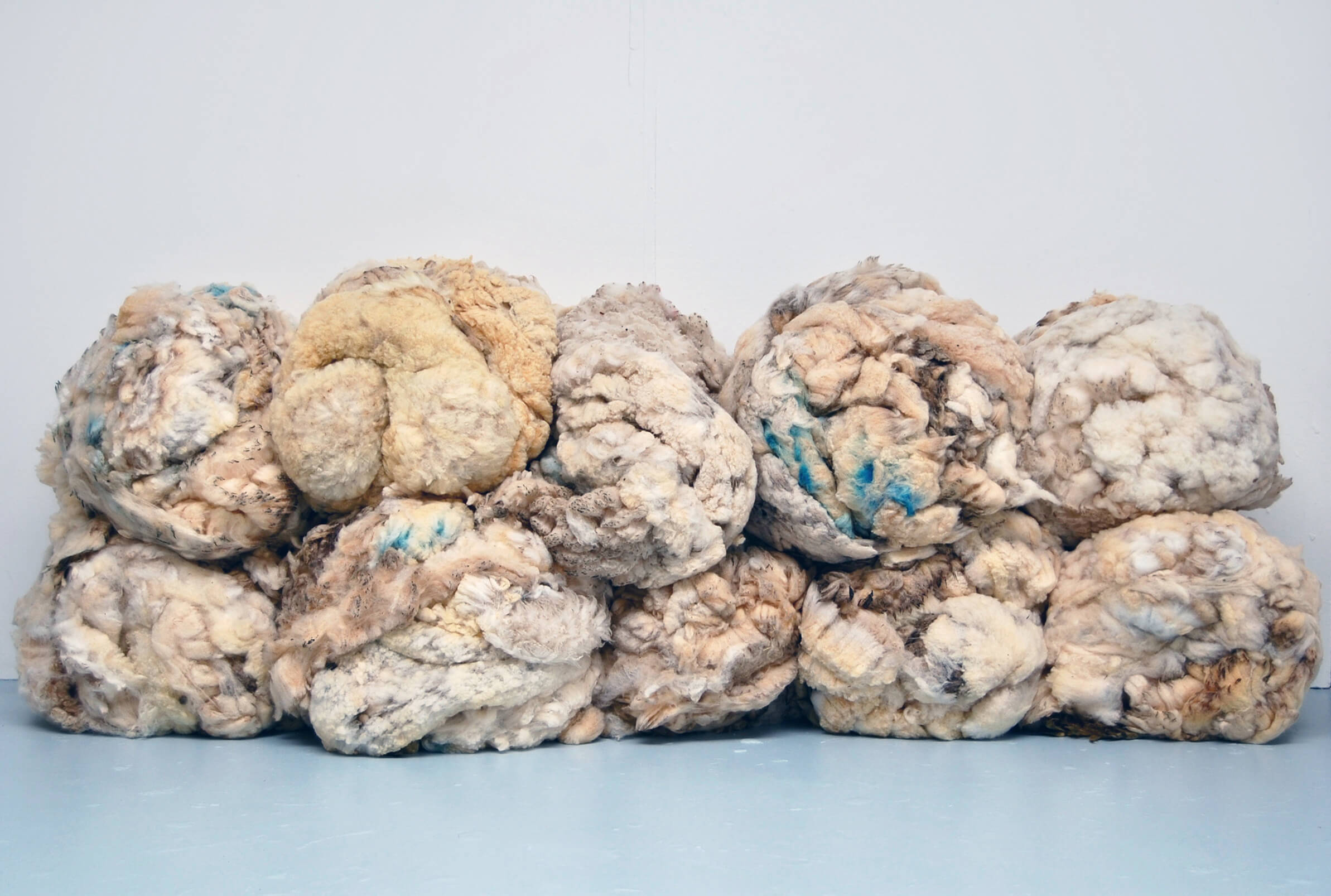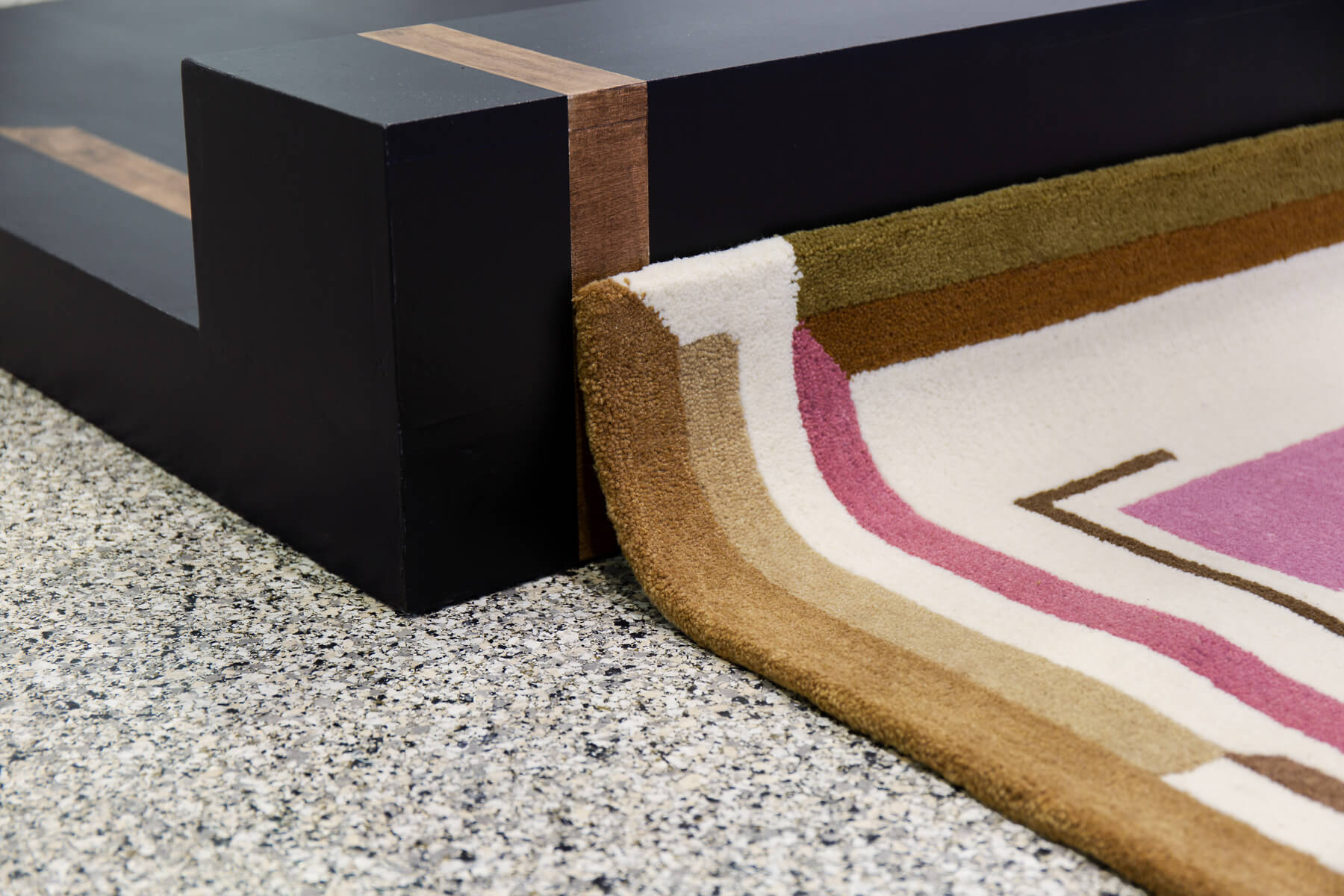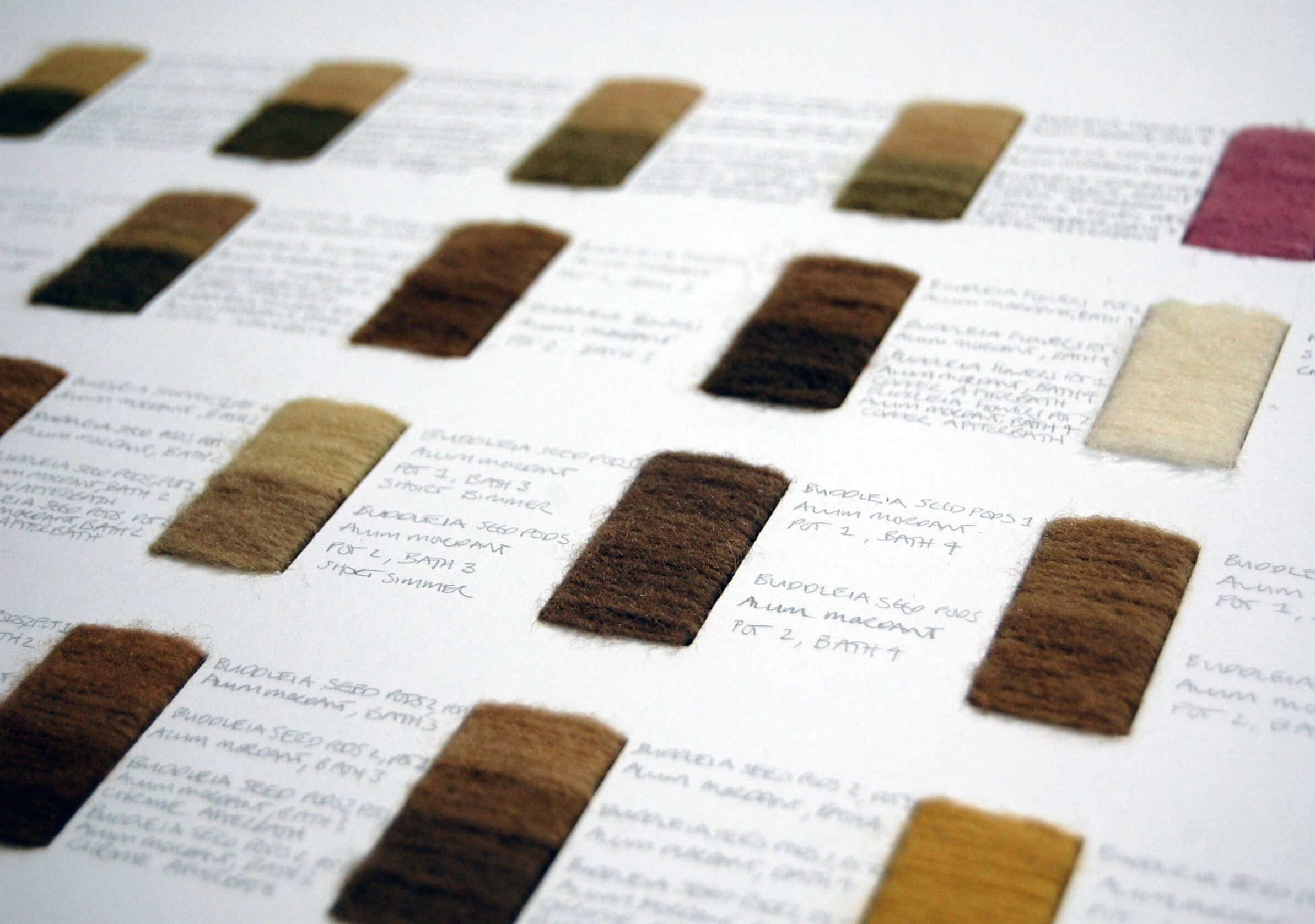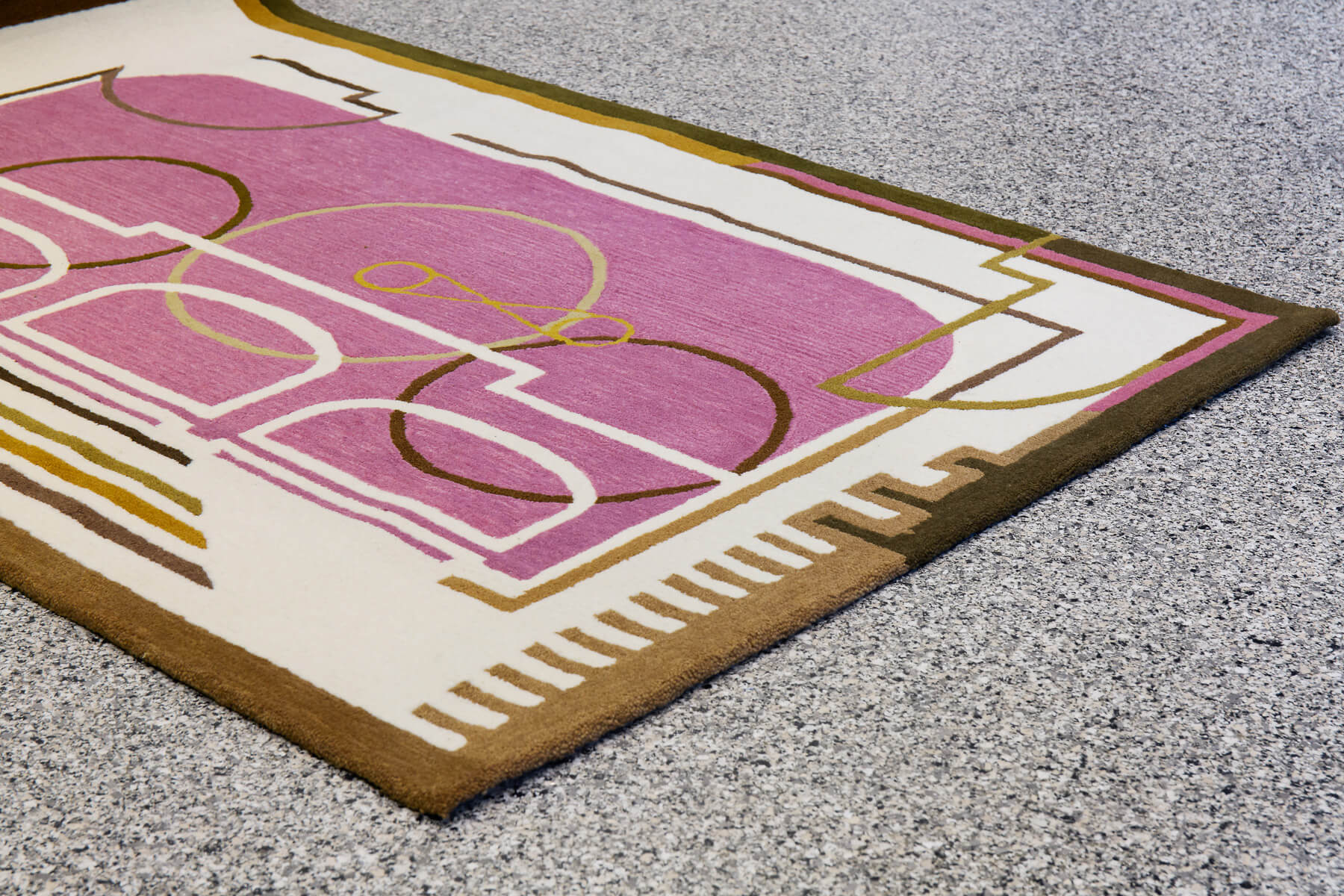 Hand-tied Suffolk Texel cross
Hand-tied Suffolk Texel cross
 Buddleia dye
Buddleia dye
 Buddleja Davidii skeins
Buddleja Davidii skeins
 Synthetic pink skeins
Synthetic pink skeins
 Armand’s Carpet (detail)
Armand’s Carpet (detail)
2019
plinth, paint, rug (Irish wool, synthetic dye, buddleia dye, mordants) framed wool key (not shown)
rug: 1270 x 1900m. painted plinth: 1200mm x 1400mm x 300mm
installed at The LAB, Dublin, 2019. image © Kasia Kaminska
 Armand’s Carpet (detail)
Armand’s Carpet (detail)
2019
plinth, paint, rug (Irish wool, synthetic dye, buddleia dye, mordants)
image © Kasia Kaminska
 Armand’s Carpet (detail of framed wool key)
Armand’s Carpet (detail of framed wool key)
2019
Irish wool, synthetic dye, buddleia dye, mordants
 Armand’s Carpet (detail)
Armand’s Carpet (detail)
2019
plinth, paint, rug (Irish wool, synthetic dye, buddleia dye, mordants)
image © Kasia Kaminska
 Armand’s Carpet (detail)
Armand’s Carpet (detail)
2019
plinth, paint, rug (Irish wool, synthetic dye, buddleia dye, mordants)
image © Kasia Kaminska
 Armand’s Carpet (detail)
Armand’s Carpet (detail)
2019
plinth, paint, rug (Irish wool, synthetic dye, buddleia dye, mordants)
image © Kasia Kaminska
 Armand’s Carpet
Armand’s Carpet
2019
plinth, paint, rug (Irish wool, synthetic dye, buddleia dye, mordants)
installed at Galway Arts Centre, Galway, 2019. image © Tom Flanagan
For Armand’s Carpet MacLeman dyed Irish fleece with Buddleia to produce an ‘Oriental’ rug addressing the legacy of trade legislation and colonial exploration. Introduced from China in the late 1800s as an ornamental plant by Fr. Armand David, Buddleja davidii is quick to establish in disturbed sites. Harvesting it from waste ground, the artist used mordants to adjust the colour of wool sourced from a farmer and merchant, incorporating one synthetic dye (pink). A by-product with little return for farmers since exports to China’s carpet industry ceased, the wool was scoured, dyed, and hand-tufted in Ireland, its design presenting a fragmented version of the traditional layout of an oriental rug. The floor piece was accompanied by a framed key of wool samples and dye recipes.
Armand’s Carpet was made with thanks to Tommy Varden, Michael Donnellan, Ethna and Richard Gillespie, Ceadogán Rugs, S-Twist Wool, and Cushendale Woollen Mills. It was funded by an Arts Council Project Award 2018 and developed during a Dublin City Council Residential Residency supported by Galway City Council.
Armand’s Carpet was acquired for the Arts Council Collection in 2019.

